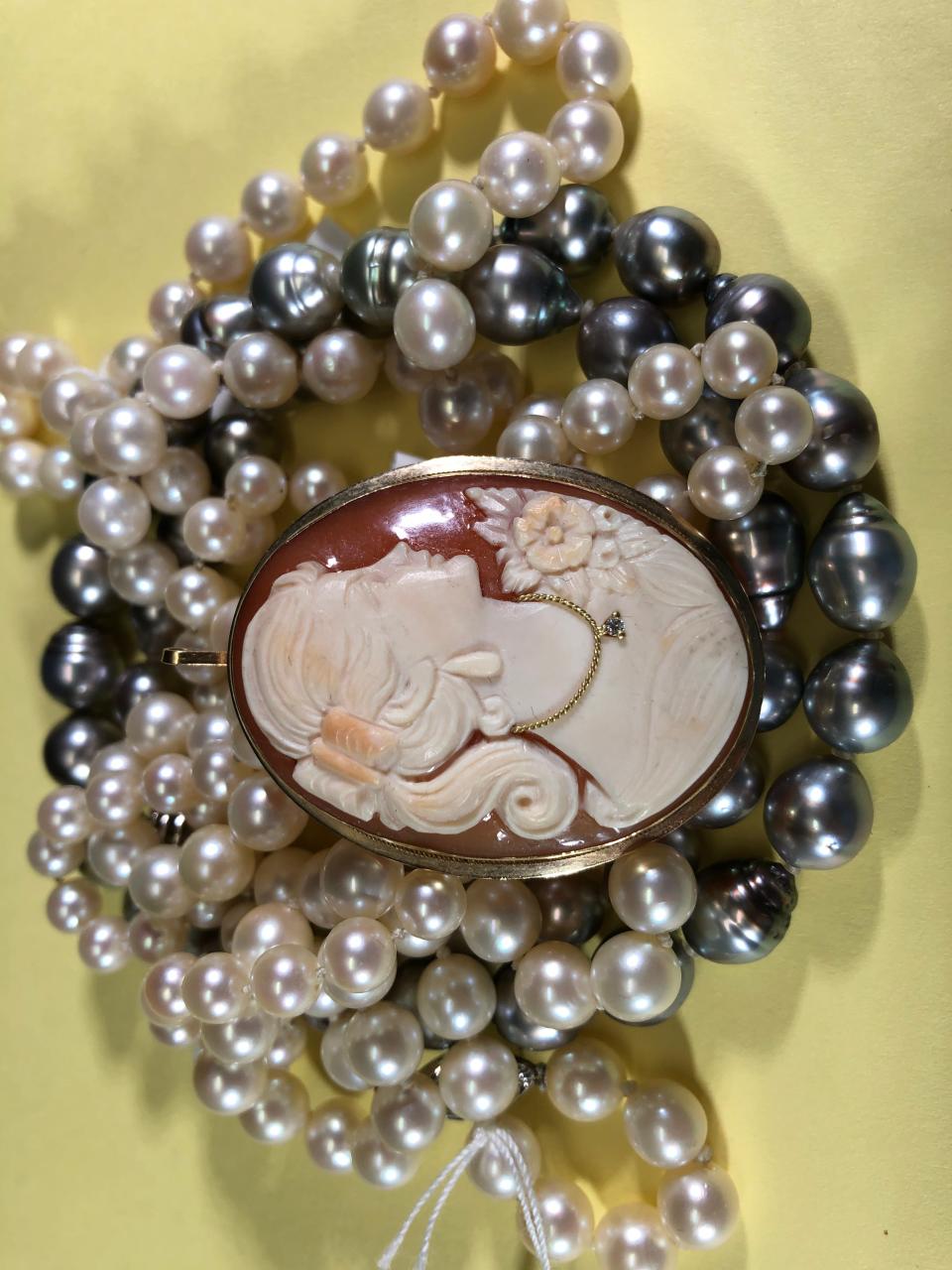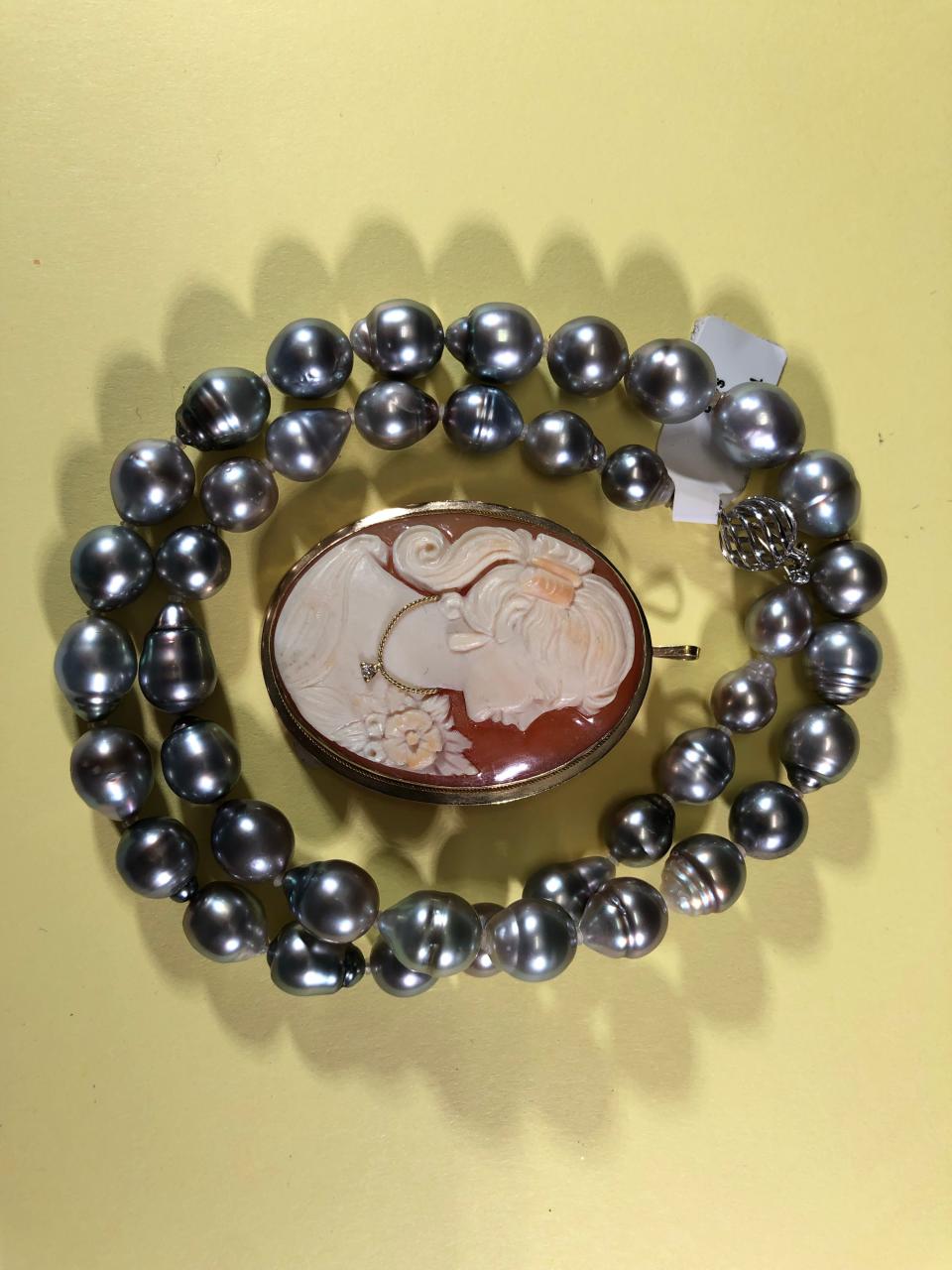Antiques: The new year gleams with pearls and cameos
With the advent of a new year, those of us in the retail game often spend part of the holidays sitting around trying to identify emerging trends. As usual, it's a muddle. All the same, two categories that seem to be gaining strength in the jewelry sector are cameos and pearls.
Both have long been regarded as grandma items with little appeal to the younger set, but that is changing. Men as well as women are buying and wearing pearls these days, and the depth and workmanship reflected in cameos are attracting new adherents. Let's nose around.
To start with, cameos are essentially small carvings done in relief on natural materials such as lava, sea shells and stone. Their creation dates back to ancient times when early Sumerians, those pioneers of civilization that lived between the Tigris and Euphrates rivers, made them for use primarily as seals. They evolved as jewelry during the Greek and Roman empires when highly detailed cameos made from translucent agate became popular. In the 16th century, most cameo artisans switched from stone to sea shells as a medium to reduce the time and cost of manufacture.

During the centuries that followed, cameo workshops popped up in a variety of countries to satisfy an ever-increasing demand. Some were made as souvenirs, others to be set in jewelry, and still others were custom made with images of loved ones inscribed as keepsakes.
As with paintings and porcelain, a few artists simply copied earlier designs, occasionally with such skill that it is nearly impossible to determine which came first. Cameos made during the Victorian era were often oval in shape and mounted as brooches in gold or silver. When looking for antique cameos, bring a loop or magnifying glass to examine the artistic detail, and inspect the pin and setting for age. Those are the elements that separate wheat from chaff.
As for pearls, their use as jewelry goes back even farther than cameos. Natural pearls come from clams, mussels and oysters, with regional populations of each known to create pearls with uniquely different shades. South sea white pearls harvested from several types of oysters are regarded as the best of breed with the famous black pearls of Tahiti not far behind.
Freshwater pearls come from mussels and are generally of lesser value. Clams and other mollusks will also create pearls, sometimes larger and more asymmetrical than those from oysters. Early evidence suggests that pearls were coveted by Chinese royalty as far back as 2300 BC, and they have been highly regarded ever since.

In recent years, the harvesting of wild pearls has nearly disappeared in favor of cultured or man-made versions of the same thing. Wild pearls are also increasingly scarce with some forecasting they will soon vanish entirely thanks to climate change and over-harvesting.
Nonetheless, the luster and iridescent nature of pearls are timeless and they will always be known as the Queen of Gems. So, whether your taste in jewelry runs to human-made artistry such as that found in cameos or the natural beauty of pearls, you are right there in step with the trends.
In galleries like ours, there are still bargains to be had in both categories, so get out there and dig around. You just might be ahead of the pack.
Mike Rivkin and his wife, Linda, are longtime residents of Rancho Mirage. For many years, he was an award-winning catalogue publisher and has authored seven books, along with countless articles. Now, he's the owner of Antique Galleries of Palm Springs. His antiques column appears Sundays in The Desert Sun. Want to send Mike a question about antiques? Drop him a line at info@silverfishpress.com
This article originally appeared on Palm Springs Desert Sun: Antiques: The new year gleams with pearls and cameos

